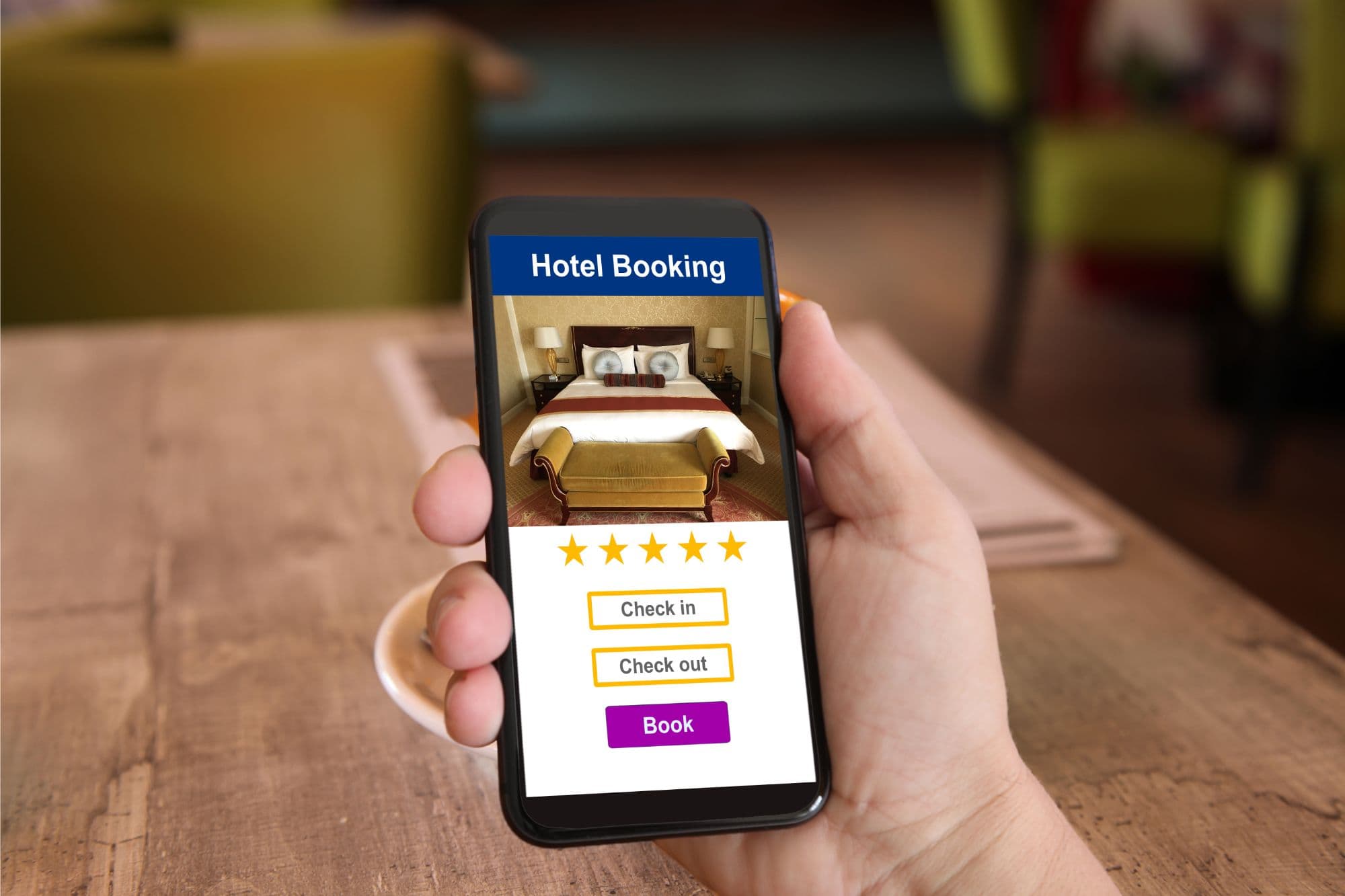4 Key Ways to Build a Successful Online Travel Agency in 2023

Guide to OTAs gaining edge in 2023: Focus on personalization, alliances, UX, service. Leverage tech & data.
By Nuitée team
Published July 11, 2023
In the fast-paced world of online travel, standing out is paramount. This guide dives into the key strategies for Online Travel Agencies (OTAs) to gain a competitive edge in 2023, focusing on personalization, strategic alliances, user experience, and customer service. Learn how to leverage technology, big data, and shifting consumer behaviors to drive your OTA's success.
In the rapidly transforming world of online travel, carving a distinctive presence has become paramount for Online Travel Agencies (OTAs). The digital revolution, coupled with the proliferation of travel companies, has reshaped how consumers approach travel bookings. With a simple click of the mouse, consumers can shift their allegiance from one travel service to another, creating an imperative for OTAs to devise innovative strategies that not only attract but also retain these digitally savvy travelers.
Just as the world of online travel has rapidly evolved in the past few years, our access to information and big data analytics has given us unparalleled insight into macro trends and consumer behavior. We’re seeing growth in the tourism industry, with hotels as the largest market segment.
Revenue in travel and tourism is expected to show an annual growth rate of 4.41%, resulting in a projected market volume of US$1,016.00bn by 2027. Source
The market’s largest segment is Hotels with a projected market volume of US$408.80bn in 2023. Source
Furthermore, insights derived from big data reveal significant changes in travel patterns, as well as evolving online user preferences and behaviors.
It’s more important than ever to leverage these insights. Let’s take a deep dive into some of the key trends in overall consumer behavior and in the travel industry, to see how we can apply these insights to running a successful online travel agency.
1. Personalization and Customer Engagement
The modern traveler, particularly within the millennials and Gen Z demographics, craves personalized experiences, marking a trend OTAs can’t afford to ignore. This trend has created an imperative for OTAs to provide tailored offerings that resonate with each customer’s unique tastes, lifestyle, and past booking patterns.

Embracing behavioral trends like environmental consciousness can also position an OTA as a forward-thinking business and set them apart from the rest.
70% of global travellers say they would be more likely to book an accommodation knowing it was eco-friendly […]
In practical terms, OTAs can enhance their platforms to cater to sustainability-focused travelers in a few key ways. They can include a filter for “Eco-friendly” or “Sustainable Travel” options that highlight certified sustainable providers and experiences, such as resorts using renewable energy, hotels with efficient waste management, or responsible tourism practices. The OTA’s site can also feature informative content like blog posts, videos, or infographics that educate visitors about sustainable tourism practices. Moreover, integrating sustainability ratings into their review system gives previous travelers a voice in endorsing accommodations or operators that prioritize sustainable practices, helping future travelers make informed, eco-conscious decisions.

The increase in solo travel is also reshaping the travel industry, with a 2019 study revealing that 76% of travelers were considering or had already embraced this trend. Among women, interest has soared exponentially.
With the term “solo female travel” searches having risen six-fold in the four years before the COVID-19 pandemic, and women making up 70% of hotel website visits, OTAs can seize this opportunity.
By offering curated solo travel packages and enhancing search functionalities for solo traveler preferences, OTAs can cater to this growing market segment.
Implementing data-driven personalization, whether through bespoke travel packages or personalized communications, has been shown to enhance brand loyalty and customer retention. OTAs can utilize insights derived from customer behaviors and preferences to curate experiences that resonate with each client’s travel aspirations.
Prioritizing personalization and customer engagement can deepen customer relationships, enhance brand loyalty, and propel OTAs’ growth and success in the competitive online travel landscape.
2. Strategic Partnerships and Alliances
By forming strategic partnerships with airlines, hotels, car rental services, and local tour operators, OTAs can offer customers a broader range of services. This not only creates new revenue streams but also enhances the overall value proposition of the OTA.

Remember what we mentioned about the increased interest in sustainable tourism? There’s an opportunity here. For example, OTAs can strategically partner with green initiatives by integrating carbon offset programs into their booking process. This allows travelers to voluntarily fund environmental projects, thus highlighting the OTA’s commitment to sustainability and resonating with the eco-conscious travelers.
Think of strategic partnerships as a way to demonstrate commitment to a cause both you and your users have a strong interest in. It’s a win-win situation.
3. Site Optimization for Improved User Experience
In today’s digital age, the design and functionality of your website can significantly impact your business’s success. A seamless user interface, on both desktop and mobile, incorporating elements like quick registration processes, a comprehensive search results display, intuitive and personalized user areas, can enhance customer engagement and boost conversion rates.
38% of users will stop engaging with a website if the content or layout is unattractive. Source
This underscores the importance of aesthetic appeal and easy navigation.
However, these facets need constant attention and improvement to stay in line with evolving market trends and user expectations. Failure to do so risks your portal falling behind its competitors.
A major component of user experience is the accommodation results users get after a query. An incorrectly implemented interface and API can lead to multiple listings for the same property, non-competitive pricing, or even properties that aren’t available for the user’s selected dates. This in turn can lead to low look-to-book ratios, or even worse, a user being sent to the wrong hotel.

This is where hotel mapping comes into play. Hotel mapping, which involves accurately linking hotel properties from various suppliers, is a pivotal aspect of OTA operations. Yet, this crucial process is often overlooked or manually performed, leading to inconsistencies and inaccuracies. Automated mapping solutions like Cupid have emerged to address this challenge. Solutions like this use advanced machine learning to automate the mapping process, significantly improving coverage and accuracy. Enhanced accuracy reduces the risk of booking errors, thereby improving the customer experience and safeguarding potential revenue. Additionally, the automation optimizes workflows, boosting efficiency and overall conversion rates.
4. Prioritizing Customer Value, Feedback, and Service
In the increasingly competitive travel industry, creating customer value extends beyond just offering competitive pricing.
90% of Americans use customer service as a deciding factor when choosing to do business with a company. Source
This isn’t surprising, considering that users are often in a “vacation mood” and would appreciate a friendly, helpful interaction when they have inquiries or face issues.
As such, the presence of efficient customer service channels, such as chat systems, becomes crucial for OTAs. These platforms allow OTAs to address users’ inquiries and questions promptly, enhancing their overall experience. However, it’s not enough just to respond; the tone of these interactions should be as friendly and supportive as possible, considering the holiday spirit that users are typically in. With advances in generative language models, finely-tuned AI chatbots can greatly enhance the customer experience, and retain your brand’s unique voice.

Alongside this, transparency in property information and cancellation policies, as well as prompt responsiveness to customer feedback, significantly contributes to your OTA’s appeal. Encouraging customers to leave reviews and responding to them promptly can bolster your online reputation, fostering trust among potential customers.
91% of 18-34 year old consumers trust online reviews as much as personal recommendations. Source
To sum up, investing in customer reviews and ratings, and enhancing customer service channels, can be a significant step towards boosting an OTA’s online reputation and customer trust.
Conclusion
The competitive landscape of the online travel industry, intensified by rapid technological evolution, demands innovative and adaptive strategies from OTAs. By implementing personalized customer engagement tactics, optimizing their websites for superior user experience, leveraging efficient hotel mapping tools, forming strategic partnerships, and prioritizing customer value and feedback, OTAs can differentiate themselves from their competitors.
By adopting these strategies and tactics and staying on top of consumer behavior, OTAs are better equipped to navigate the challenges, stand out from the crowd, and ensure their continued growth and success in the online travel industry.
Ready to start? Sign-up instantly and start mapping in less than 10 minutes at no cost.